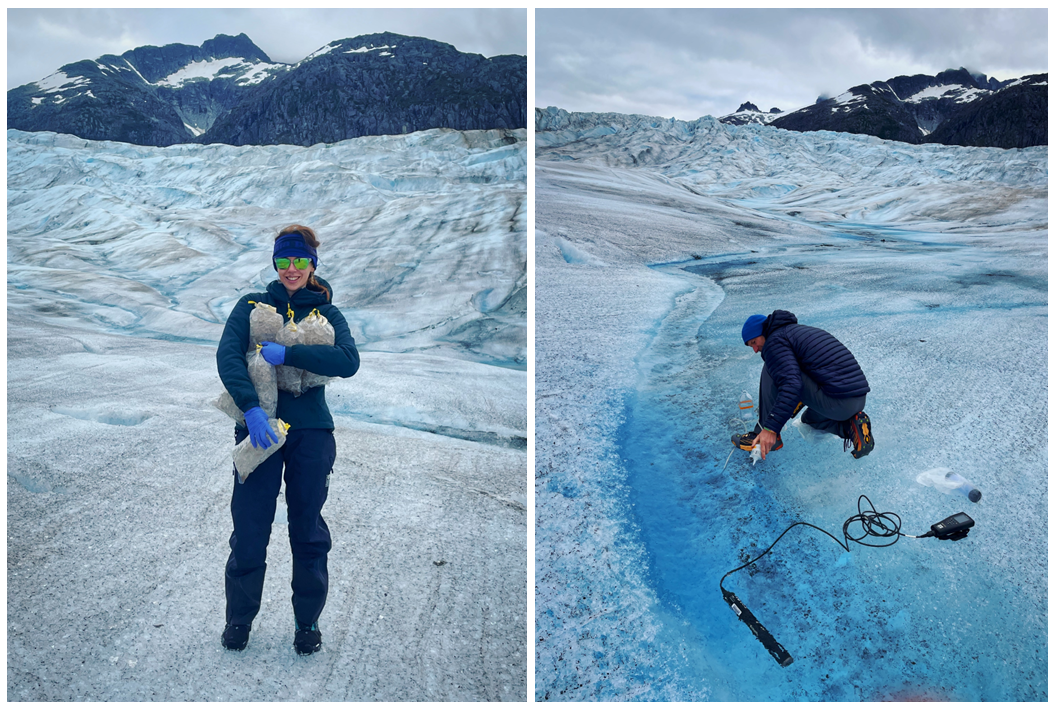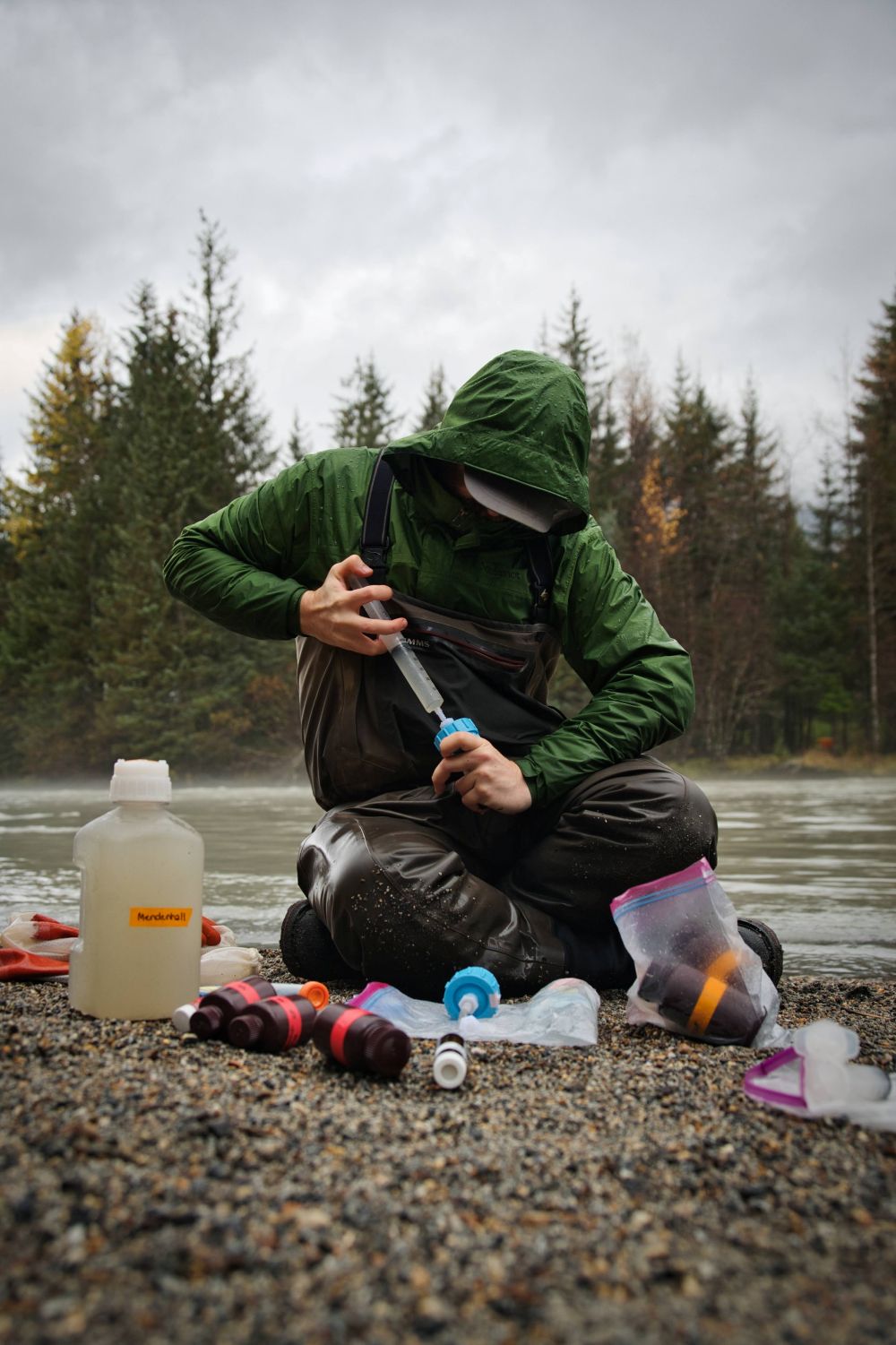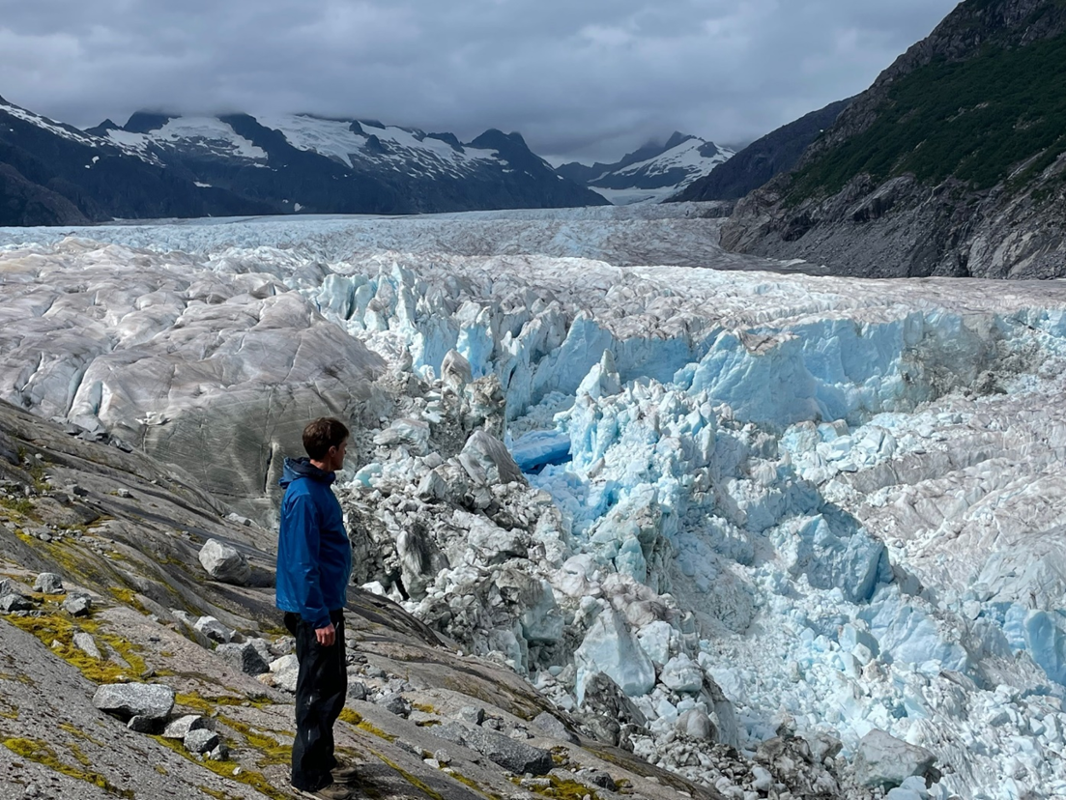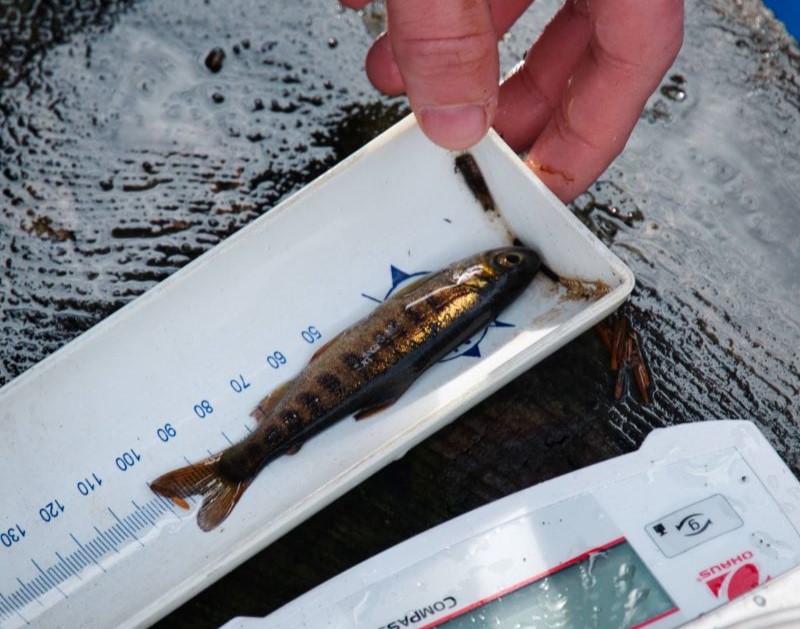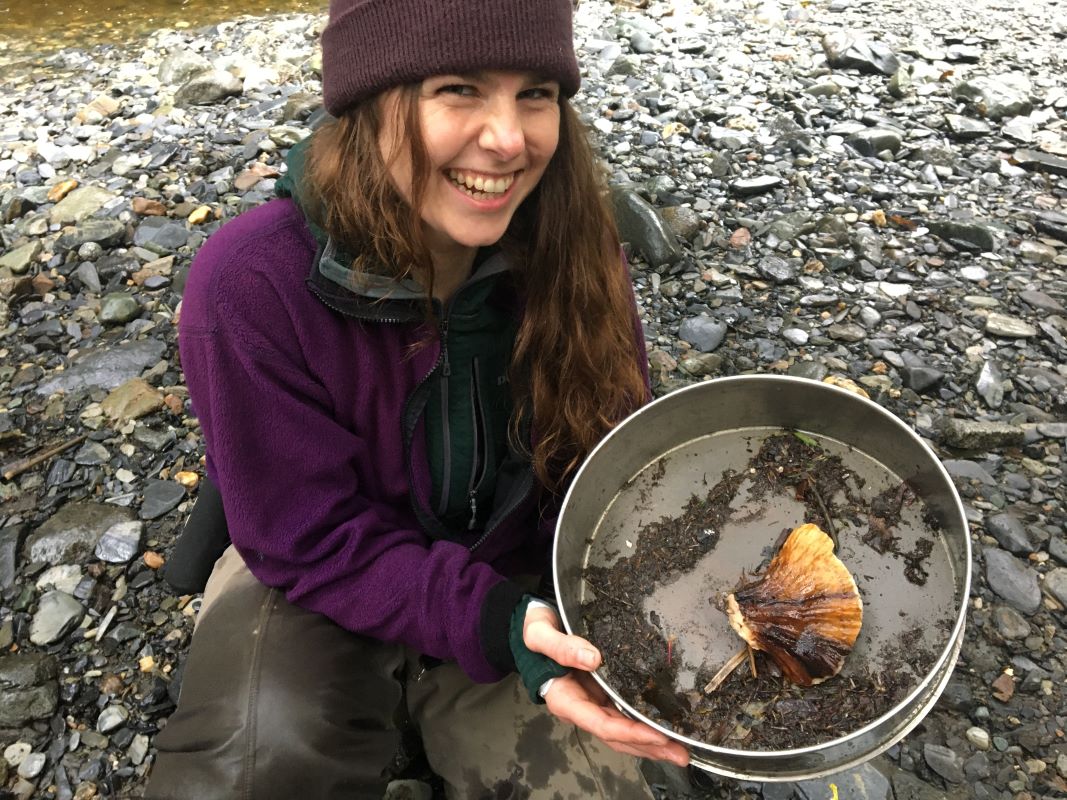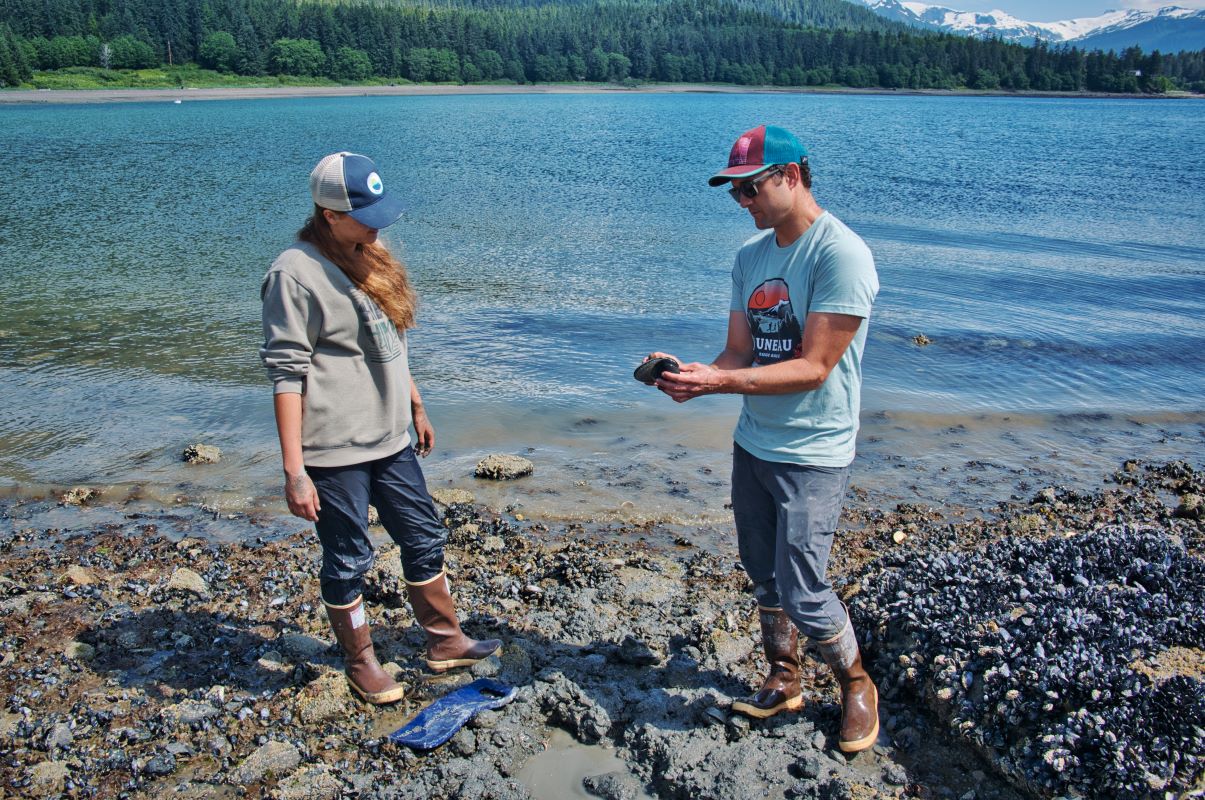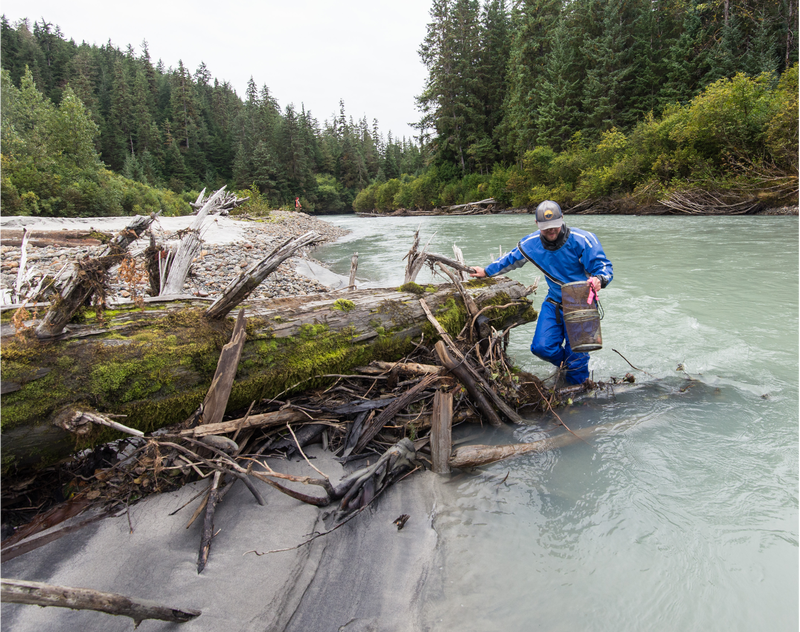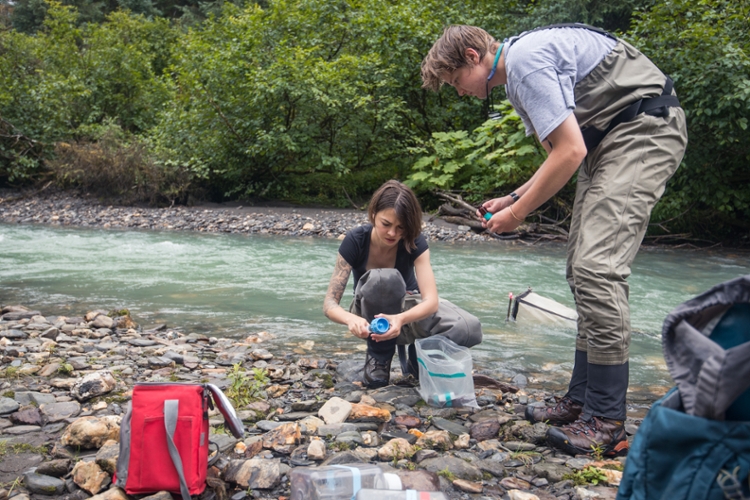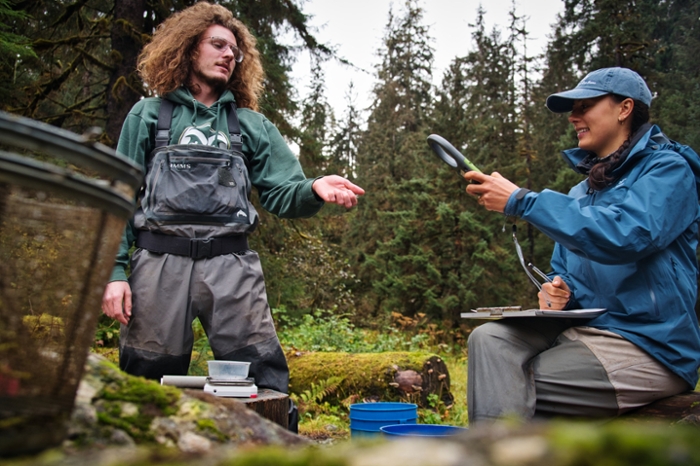Catch the latest news from ACRC's scientists, staff, students, and partners.
Aug 26, 2025
From Ice to Ecosystems: NSF Backs ACRC Study of Glacial Carbon Sources
Glaciers are rapidly melting across the globe, yet there is still much that we do not understand about their impacts on downstream ecosystems. While increased volumes of water released from melting glaciers may be apparent to most people, glacier meltwater also contains large quantities of dissolved organic material, known as DOM, which contains carbon that is exported downstream. Dissolved organic matter derived from the glacial ecosystems is important to downstream food webs due to its high “bioavailability” to stream microbes compared to other sources of carbon in the environment (e.g., from soils in deglaciated portions of the watershed).
Read MoreMay 6, 2025
Changing Watersheds, Changing Nutrients: Glacier Loss and Coastal River Chemistry
As glaciers retreat across the Gulf of Alaska’s coastal mountains, the flow of nutrients from land to sea is being reshaped, potentially transforming nearshore food webs that support fisheries, marine mammals, and seabirds. In a new multi-year study, ACRC researchers Jason Fellman, Eran Hood, Emily Whitney and colleagues investigated how glacier loss and shifting hydrology are altering patterns of nitrogen, carbon, and phosphorus export from coastal mountain catchments into the Gulf of Alaska. The research, published in Nature Communications Earth & Environment, offers new insight into how watershed nutrient dynamics are changing in a future with vanishing glaciers.
Read MoreJan 27, 2025
ACRC Researcher Eran Hood Awarded $1M NSF Grant to Study Glacial Outburst Floods
ACRC’s Eran Hood is a Co-Principal Investigator for a project funded by a newly awarded grant from the National Science Foundation (NSF). This research effort is being led by Jason Amundson (UAS) and is focused on glacial outburst floods, known asjökulhlaups—a term of Icelandic origin describing sudden, catastrophic floods caused by the rapid drainage of water from a glacier-dammed basin.
Read MoreDec 14, 2024
Biennial Pink Salmon Spawning Shapes Juvenile Coho Growth in Southeast Alaska
Pink salmon have a strict two-year life cycle that results in distinct populations and biennial differences in spawning abundance. In Southeast Alaska’s rivers, odd-year pink salmon returns are typically larger than in even years and deliver greater pulses of marine-derived nutrients to freshwater ecosystems. These nutrient-rich marine resources, primarily in the form of salmon eggs, influence the growth and survival of stream-dwelling fish such as juvenile coho salmon.
Read MoreDec 5, 2024
Carbon on the Move: Insights from Montana Creek
Peering down from the side of the trail, Kaxdigoowu Héen (Montana Creek) initially appears crystal clear to passing hikers, with swift riffles and smooth pools allowing for glimpses of sandy gravel bars and smooth granite stones below the surface. To juvenile salmon, however, the waters are anything but transparent. Pine needles, leaves, and dislodged invertebrates such as mayfly nymphs and rove beetle larvae are suspended throughout the water column, floating downstream in a parade of particulate matter alongside molecular forms of organic and inorganic carbon unable to be seen with the naked eye.
Read MoreNov 26, 2024
Climate Change and Shellfish Safety: ACRC and Sitka Tribe of Alaska Tackle Emerging Challenges with New Grant
ACRC researcher John Harley and the Sitka Tribe of Alaska have received a grant from the National Institutes of Health (NIH) and the National Science Foundation (NSF) to investigate how changing climate conditions may impact the safety of subsistence shellfish harvesting in coastal Alaska. This five-year grant will support ongoing toxin monitoring efforts and fund new research to understand how harmful algal blooms (HABs) will be impacted by a changing climate.
Read MoreAug 26, 2024
Herring on the Side of Caution: Climate Change and Spawning Shifts
As winter turns to spring, Pacific herring return to nearshore waters to spawn, coating rocks, kelp, and hemlock branches with their sticky roe and turning the dark waters a vibrant milky teal. The annual herring spawn is a critical event that many species rely on in coastal ecosystems. Whales, sea lions, and salmon chase the glittery fish beneath the surface, sea birds dive after them from above, and wolves, bears, and people enjoy the roe along the shore. As a keystone species of marine ecosystems, Pacific herring are an important component of Alaska Native and British Columbia's First Nations culture and subsistence harvest, and a valuable commercial fishery. The timing of the herring spawn is seen as a critical seasonal signal, heralding the changing of the seasons, the arrival of migratory animals, and an indicator to begin or end harvests of other species. Since the timing of this spawn plays such a critical role in seasonal cycles, it is important to understand what will happen to the herring spawn in the face of a changing climate.
Read More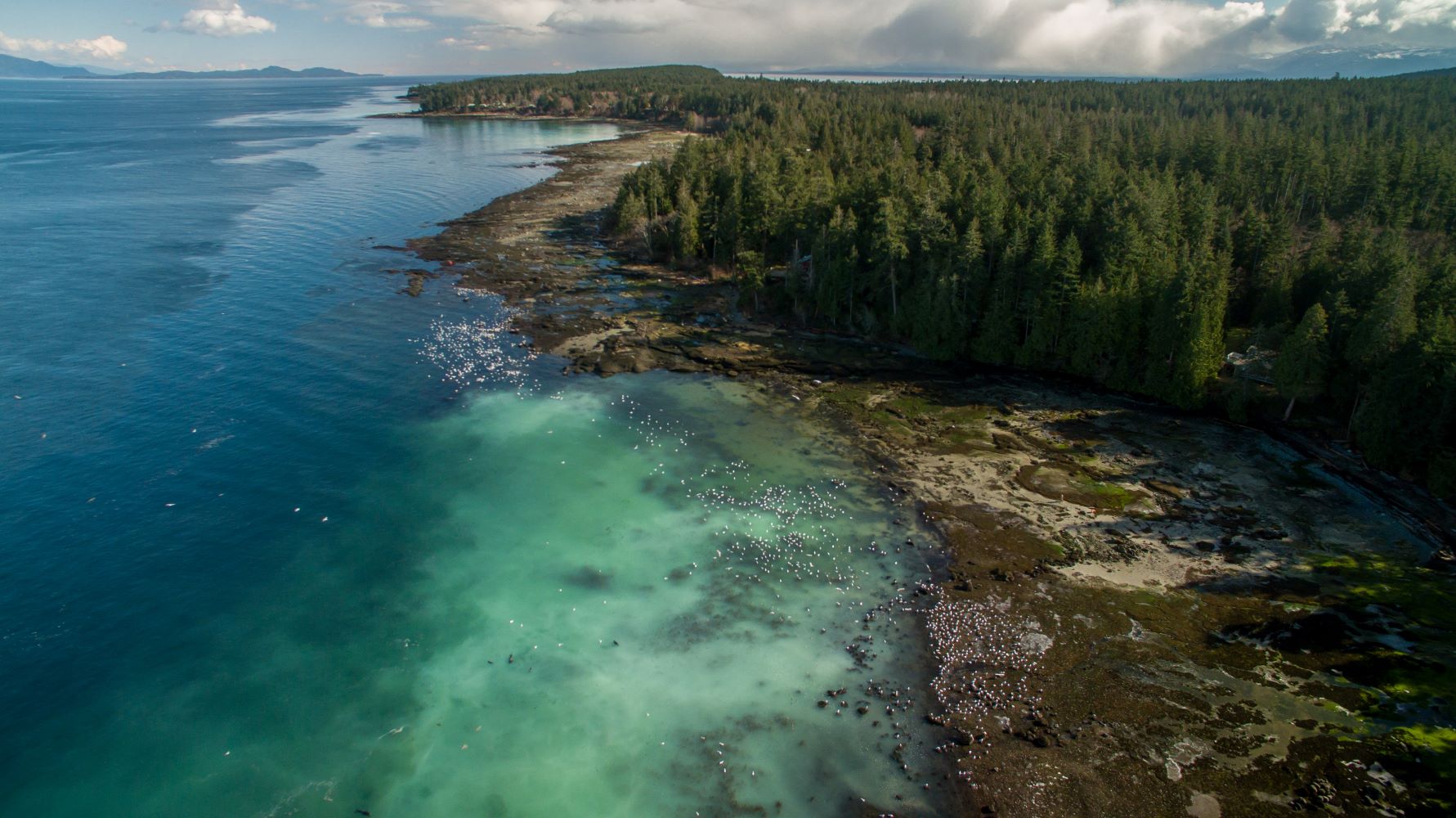
Apr 25, 2024
From Glaciers to Streams: Understanding the Shifts in Southeast Alaska's Aquatic Communities
Rapid glacial retreat across Southeast Alaska is reshaping coastal watersheds from the base of the food web up, and shifting invertebrate communities could lead to less stable aquatic communities as unique hydrologic conditions in glacial and snow-fed streams disappear. Former ACRC graduate student Matt Dunkle recently published a new research paper that explores how the diversity of water sources in Southeast Alaska influences freshwater invertebrate community diversity and productivity.
Read MoreApr 22, 2024
From undergraduate to graduate studies, former ACRC intern Connor Johnson thrives in water quality research
Each year, UAS student interns make critical contributions to ongoing research efforts at ACRC. You’ll find them on bikes or skis headed out to collect water samples, set minnow traps, measure glacial outflow, or dig soil pits. These motivated students spend their internships earning credits toward their degrees, learning lab skills, presenting findings at conferences, and exploring career paths in research. In 2017, Connor Johnson was one such student. His passion for working outdoors and growing interest in natural sciences brought him to the UAS environmental science program. As his academic advisor, ACRC researcher and UAS professor of environmental science Eran Hood invited him to apply for a summer internship with ACRC.
Read MoreDec 18, 2023
Stream hydrology impacts whether salmon can capitalize on pink salmon nutrients, new research suggests
Each July, Juneau’s streams fill with an abundant, nutrient-dense resource from the ocean: spawning pink salmon. The arrival of pink salmon eggs into coastal watersheds brings a large pulse of nutrients to freshwater ecosystems, marking an important phase of growth for stream-rearing salmon before they smolt and begin their sea-ward migration. New research, led by ACRC graduate student Kevin Fitzgerald, points to stream hydrology as an important factor influencing whether juvenile salmon are able to capitalize on the pink salmon resource pulse.
Read More
